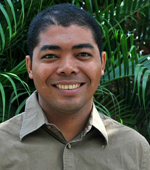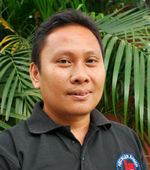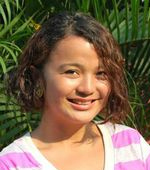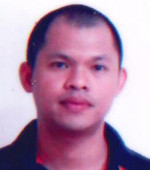Cebu DI-DRR Network Conducts Lahat Handa Training of Trainers
The Cebu Disability-Inclusive Disaster Risk Reduction Network (CDiDRRN) conducted a five-day training-of-trainers (TOT) on Lahat Handa (Inclusive Disaster Risk Reduction) in partnership with A2D Project—Research Group for Alternatives to Development Inc., Cebu Provincial Disaster Risk Reduction Management Office and Cebu Provincial Social Welfare and Development Office (PSWDO) on April 18-22, 2016.The training is organized through A2D’s ENABLED Project aimed at building the capacity of its members and partners towards disability-inclusion in disaster risk reduction in the Province of Cebu. A2D’s initiative is funded by Arbeiter Samariter Bund (ASB).
The participants will form the first pool of trainers who will in turn train DRR stakeholders in local government units (LGUs) of Cebu province on inclusive DRR and disaster preparedness. The TOT was participated by more than 30 stakeholders or representatives from the civil society organizations, local government units and disabled people’s organizations (DPOs).
Facilitated by representatives of Handicap International, CBM, National Council of Disability Affairs (NCDA) and Alyansa ng may Kapansanang Pinoy (AKAP Pinoy), the participants were trained using the Manual on Inclusive DRR called Lahat Handadeveloped by a Technical Working Group consisting of the Philippine Office of Civil Defense, NCDA, Handicap International and Center for Disaster Preparedness among others. The manual is a supplementary module to the Office of Civil Defense’s Basic Instructor’s Guide. This manual contains guidelines on inclusive early warning systems, tip sheets for persons with disabilities, and accessible evacuation centers, among others.
Acknowledging the importance of accommodating the specific needs of persons most at risk to disaster, the first day established the link between disasters and the vulnerabilities of persons with disabilities, older persons, women and children. The legal bases of the community-based disaster management and inclusive community risk assessments were likewise revisited. These lectures are contained in the first module of the Lahat Handa Manual.
The second and third modules were discussed on the second day. Participants drew up disability-inclusive plans and reviewed the roles and responsibilities of barangay (village) disaster management plans during the workshops that followed. Games were also used as a methodology in developing family preparedness plans, evacuation planning and prevention and prevention and mitigation procedures.
In addition to this, participants were asked to review the accessibility of the training venue. Essential feedback and recommendations were given by persons with disability in attendance. Mark Joseph Signe of Deaf Disaster Assistance Team-Disaster Risk Reduction (DDAT-DRR) noted that blinking lights should be installed inside hotel rooms since loud knocks and telephone rings would not suffice for deaf persons in cases of emergency. Additional comments include trip and slip hazards for persons on wheelchair and those with physical difficulty on the shiny floors of the cafeteria. The facilitators assured that the feedback would be informed to the hotel to address.
The fifth and final day of the training centered on Module 4 consisting of basic concepts of first aid, proper handling of human corpse and basic survival tips. To cap the training workshop, individual participants were tested on their platform skills. Using the Lahat Handa manual they were each asked to choose a topic and simulate an inclusive facilitation; then, their performance were reviewed by the resource speakers.
Marvelous Jordan of the Blind Association of Lapu-Lapu City, Cebu welcomed increasing efforts of civil society groups and the government institutions to mainstream disability inclusion in disaster management through institutionalization of the manual. “This training is an effective means to ensure disability inclusion in DRR. It helps remove barriers for at risk persons by providing information on how what to do during emergencies.”



























